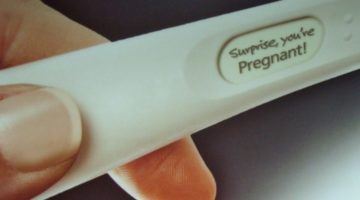Labor Pain – Everything You Need to Know about Child Birth!
Childbirth is a miraculous and profound event that marks the beginning of a new life. However, the journey to motherhood is not without its challenges, and labor pain is an integral part of the childbirth process. This article Labor Pain – Everything You Need to Know about Child Birth! aims to provide a comprehensive understanding of labor pain, its purpose, stages, management techniques, and the emotional aspects surrounding it. By delving into the depths of this natural phenomenon, we can better appreciate the resilience of women during childbirth and gain insights into the measures taken to ensure safe delivery.
Labor Pain – Everything You Need to Know about Child Birth!
What do you understand by Labor Pain?
Labor pain refers to the discomfort and intense sensations experienced by a woman during childbirth. It occurs as the uterine muscles contract to help the cervix dilate and push the baby through the birth canal. Labor pain typically starts with mild contractions that gradually become stronger, longer, and closer together, indicating the progression of labor. It is a unique and personal experience, varying from woman to woman, and influenced by factors such as the baby’s position, the mother’s anatomy, and her pain tolerance.
Related- 5 Reasons – Why You Should Not Drink Coffee (Caffeine) During Pregnancy?
The Phases of Labor Pain
Labor pain can be categorized into three main stages:
a) Early Labor-
During this initial phase, contractions are mild and irregular. Women may experience lower back discomfort, similar to menstrual cramps. This stage is often the longest and can last for several hours or even days.
b) Active Labor-
In this stage, contractions become more intense, occurring at regular intervals. The cervix continues to dilate, and the woman may feel increased pressure and pain in her lower abdomen.
c) Transition Phase-
The transition phase is the most intense and challenging part of labor. Contractions peak in strength and frequency, as the cervix reaches its full dilation. Women may experience feelings of exhaustion, restlessness, and intense pain.
Causes of Labor Pain-
The exact mechanisms that trigger labor pain are not entirely understood, but several factors contribute to its occurrence:
a) Uterine Contractions-
As the uterus contracts, it helps move the baby down the birth canal, leading to labor pain. The strength and frequency of contractions play a significant role in the level of pain experienced.
b) Pressure on Nerves-
As the baby descends through the pelvis, it puts pressure on various nerves, leading to discomfort and pain in the lower back, hips, and thighs.
c) Hormonal Changes-
The release of hormones, such as prostaglandins and oxytocin, plays a crucial role in initiating and sustaining labor. These hormones can also contribute to increased sensitivity to pain.
d) Emotional Factors-
Anxiety, fear, and stress can amplify the perception of pain during labor. On the other hand, feelings of support and encouragement can help ease the experience.
Coping Mechanisms for Labor Pain-
While labor pain is a natural part of childbirth, there are several coping mechanisms that women can employ to manage the discomfort:
a) Breathing Techniques-
Deep, rhythmic breathing can help relax the body and distract from the intensity of contractions.
b) Movement and Positions-
Changing positions, walking, swaying, or using a birthing ball can alleviate pressure on certain areas and provide some relief.
Also check- Why Only Few Women Experience Nosebleeds During Pregnancy?
c) Massage and Warm Compresses-
Gentle massages and warm compresses can relax tense muscles and reduce discomfort.
d) Water Immersion-
Immersing in a warm bath or using a birthing pool can help ease labor pain and promote relaxation.
e) Relaxation Techniques-
Techniques like visualization, meditation, and guided imagery can help shift focus away from pain and promote a sense of calm.
Pain Relief Options during Childbirth-
While natural coping mechanisms can be effective for some women, others may seek medical interventions for pain relief. Several options are available, and each has its benefits and considerations:
a) Epidural Anesthesia-
Epidural anesthesia is a common method for pain relief during childbirth. It involves the insertion of a catheter into the epidural space of the spine to administer anesthetic medication, effectively numbing the lower half of the body. It can provide significant pain relief but may also have potential side effects.
b) Nitrous Oxide-
Also known as laughing gas, nitrous oxide can be inhaled during contractions to reduce pain and anxiety. It is considered safe and is self-administered by the woman.
c) IV Medications-
Intravenous pain medications, such as opioids, can be used to manage labor pain. They offer temporary relief but may cause drowsiness in the mother and can potentially affect the baby.
d) Non-Pharmacological Interventions-
Besides the coping mechanisms mentioned earlier, some women may find relief through acupuncture, acupressure, or TENS (Transcutaneous Electrical Nerve Stimulation).
Labor pain is an inevitable part of the childbirth process, and it varies from woman to woman in terms of intensity and experience. Understanding the stages of labor, the causes of pain, and coping mechanisms can empower expectant mothers to prepare for childbirth and face the challenges with confidence. Each woman’s journey through labor is unique, and the support of healthcare professionals, birth partners, and a positive birth environment can make a significant difference in the overall childbirth experience. By acknowledging labor pain as a natural and transformative process, society can work towards ensuring that every woman has access to compassionate care during this crucial time in her life.
Frequently asked questions-
What is labor pain, and why does it occur during childbirth?
Labor pain is the discomfort experienced by women during the process of childbirth. It occurs as a result of hormonal changes, particularly an increase in oxytocin and prostaglandins, which stimulate uterine contractions and cervical dilation. The pain serves a purpose by helping facilitate the birthing process, guiding the baby through the birth canal, and signaling the release of more oxytocin to strengthen contractions.
How would you describe the intensity of labor pain?
The intensity of labor pain can vary widely among women and even from one labor to another. It is often described as intense and powerful, starting as mild discomfort similar to menstrual cramps and gradually increasing in intensity as labor progresses. During the transition phase, the pain can reach its peak with very strong and frequent contractions.
What are some natural pain relief techniques for managing labor pain?
Natural pain relief techniques include:
Breathing techniques: Controlled and rhythmic breathing to relax the body and manage contractions.
Movement and positioning: Changing positions, such as walking, rocking, or using a birthing ball, can alleviate discomfort and aid in labor progress.
Hydrotherapy: Warm water immersion through water birthing or using a birthing pool can soothe and reduce the intensity of contractions.
Are there any medical pain relief options available during childbirth?
Yes, there are medical pain relief options available for managing labor pain, including:
Analgesics: Pain-relieving medications administered intravenously or intramuscularly.
Epidural anesthesia: A regional anesthetic delivered through a catheter placed in the epidural space to block pain signals from the lower body.
Nitrous oxide: Inhaled through a mask to reduce pain and anxiety during contractions.
Are there any risks associated with pain relief options during childbirth?
Pain relief options, such as epidurals, may have some risks and potential side effects, such as low blood pressure, headache, and fever. Women need to discuss the benefits and risks with their healthcare providers before making a decision.
How can partners support women during labor to help manage pain?
Partners can offer emotional support, encouragement, and physical comfort measures like massage, applying heat packs, or helping with breathing techniques. Being present and empathetic can make a significant difference in a woman’s pain management during childbirth.
Can the use of pain relief options affect the baby during childbirth?
Pain relief options, such as epidurals and medications, can have minimal effects on the baby. However, healthcare providers monitor the baby’s well-being continuously during labor to ensure their safety.
Is it possible to have a pain-free childbirth?
While some women may have a relatively pain-free childbirth experience, it is essential to understand that labor pain is a natural and purposeful part of childbirth. Pain relief options can significantly reduce discomfort, but complete pain elimination is not always achievable.
How long does labor pain typically last?
The duration of labor pain varies for each woman. Early labor may last several hours, while active labor can range from a few hours to more than ten hours. The transition phase is typically the shortest but most intense phase of labor.










